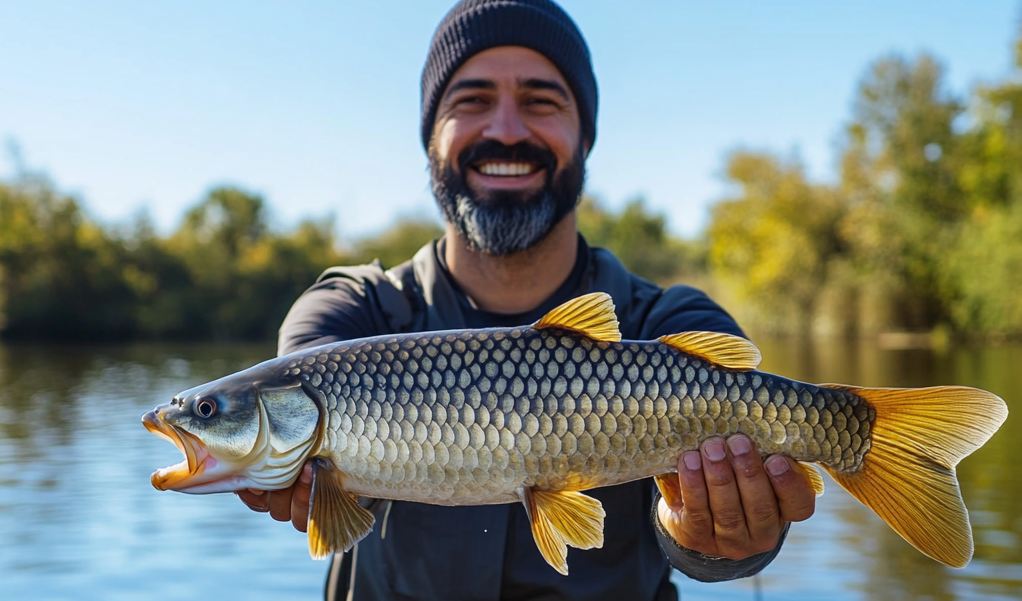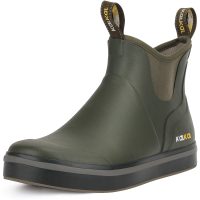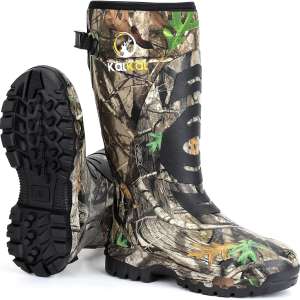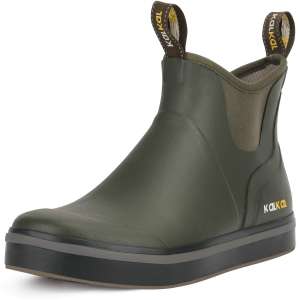The ocean is full of wonders that have attracted humans for centuries. Among its many creatures, some are bigger and stronger than anything found on land. For many anglers, the ultimate thrill comes from chasing a world record fish. The idea of catching a fish that no one has ever caught can be incredibly motivating.
How Are Fish Records Measured?
It is not easy to prove that a fish is a world record, and it involves much more than just talking about the fish you lost. The International Game Fish Association (IGFA) is one of the major organizations that hold and record the world’s official big fish records.
The primary measurements for world record consideration are weight and length.
- Weight: Most anglers use this metric when aiming to set game fish records. The fish must be measured on a scale that meets the regulations, and the document must accurately detail the weight. Calibrating the scale is necessary to prevent any errors.
- Length: Measuring length is also crucial since it plays a big role when the weight can change a lot according to the species’ last meal. Usually, we measure length by drawing a line between the snout and the middle of the tail fin when the tail is fully compressed.
It is not only the size that matters; how the animal is seized plays a key role as well. For example, the IGFA creates categories for each type of fishing tool used, like conventional tackle, fly fishing, etc.
To get a record in any category, an angler must follow the set rules for that method. You should know what type of line, rod, reel, and bait are allowed for different species.
In addition, it is necessary to be certain about the identity of the species. Crystal clear photographs as well as biological samples may need to be examined to verify the species. As a result, the record remains valid and is not mistaken for someone else’s.
Additionally, the application process should involve presenting photographs, measuring pieces, having scales certified, submitting line samples, and witness statements, among other requirements. After receiving the application, the IGFA reviews every stage of the process to confirm the record meets all the requirements.
A List Of World Record Fish
Prepare to be amazed by the sheer size and power of these record-breaking aquatic specimens:
World Record Bass Fish
Many different types of bass exist, yet when talking about the best one, anglers often think of the largemouth bass (Micropterus salmoides).
The record-breaking weight for a largemouth bass is 22 pounds, 4 ounces (10.09 kilograms). George W. Perry caught this famous fish on Montgomery Lake in Georgia, USA, on June 2, 1932.
Since it was first recorded almost a century ago, this feat shows what a huge fish this was and continues to honor Perry’s catch.
World Record Sturgeon Fish
Sturgeon are known to be very old and impressive fish, commonly called living fossils. There are many types of sturgeon, and their world records differ as well. Most people refer to the record of the white sturgeon, or Acipenser transmontanus.
The all-tackle world record for white sturgeon was 468 pounds (212.28 kilograms), caught by Joey Pallotta III on the Sacramento River in California, USA on July 9, 1983. Most of these large fish live over 100 years and reach huge sizes in the rivers where they are native.
World Record Halibut Fish
These flatfish are called halibut and can be found in the cool waters of the North Pacific and North Atlantic. Due to their size and strength, they are highly sought after by anglers.
In 1996, the record weight for a Pacific halibut (Hippoglossus stenolepis) on all-tackle gear was over 459 pounds (208.2 kilograms), held by Jack Tragis, who caught it near Unalaska Bay, Alaska, USA. These big fish can become huge and show an angler’s true fishing abilities.
World Record Tuna Fish
Tuna are strong fish that can be found swimming around in the open waters of the world’s oceans. Several types of tuna are popular with fishermen, and each one has its own records that people try to break.
The most well-known tuna record is held by the Atlantic bluefin tuna (Thunnus thynnus). The biggest-ever bluefin was caught by Ken Fraser in Nova Scotia in 1979 and weighed an amazing 1,496 pounds (678 kilograms).
Bluefin tuna are famous for being fast, strong, and growing to a large size, which is what makes them special and hard to catch for fishermen who like to go after big game.
World Record Pike Fish
Pike are active predators that often lie in wait for their prey in freshwater places around the Northern Hemisphere. Known for their long, thin shape, big teeth, and always hungry nature, these fish are often sought out by anglers as game fish.
The all-tackle world record for northern pike is a huge one, weighing in at 55 pounds and 1 ounce (or 25 kilograms). This giant pike was caught by Lothar Louis on Lake Greifensee, Germany, on October 16, 1986.
Pike this big are top of the food chain in their habitats and can even catch and eat other fish that are much larger than themselves.
World Record Gar Fish
Gars look kind of old-fashioned, with long, skinny bodies and pointed jaws covered in plenty of sharp teeth. Found mainly in North and Central America, you’ll find a few different kinds of gar in these parts.
The all-tackle world record for the alligator gar (Atractosteus spatula), the biggest of all the gar fish, is an amazing 327 pounds (148.3 kilograms).
This ancient-looking, huge fish was pulled out of Lake Texoma, Texas, by Bill Valverde on July 30, 1951. Alligator gar are top predators in freshwater and can live for a long time.
World Record Wahoo Fish
Wahoo are slim fish that are fast in the water, and you can find them swimming in the warm seas of the tropics and subtropics all around the world. Known for being very fast and able to hit hard, they are a prize to catch as a fishing target.
The all-tackle world record for wahoo is really big at 184 pounds, caught by Sara Hayward near Cabo San Lucas, Mexico, on August 16, 2000. These sleek fish can move fast when they’re after food, which makes them a fun and tough catch for fishermen.
World Record Grouper Fish
These are fish from the grouper family, and they are commonly found near the bottom in warm parts of the world’s oceans. Because they are strong and have wide jaws, fishers, both for fun and business, often target them.
The largest Warsaw grouper (Hyporthodus nigritus) ever caught on all-tackle gear weighs 680 pounds (308.44 kilograms) and was captured by Gus Pangas in the Gulf of Mexico close to Destin, Florida, USA on December 22, 1985. These fish are found in deep waters and may survive for a long time.
World Record Muskie Fish
Musky, as it is often called, is a big fish in the muskellunge species that lives in lakes and rivers in North America. Muske modelled after the chic mode into one of its traits.
A muskie weighing 67 pounds, 15 ounces (30.84 kilograms) was caught in 1949 by Cal Johnson in Lake Court Oreilles, Wisconsin, setting the world record for this species. For over seven decades, this record has honored the large size of this car.
World Record Permit Fish
Permit (Trachinotus falcatus) are caught for sport in the warm, shallow waters of the Atlantic and Gulf of Mexico. Owing to their swift and nervous actions, fly fishing for grayling can be quite tough.
The heaviest permit caught on any hook is 60 pounds (27.21 kilograms), achieved by Mario Salazar in Placencia, Belize, on May 18, 2002. As these fish like to stay on the flats, getting close while casting with care is necessary to catch one.
World Record Crappie Fish
Crappie are frequently found in freshwater lakes and rivers all across North America. Two main species exist: Black crappie (Pomoxis nigromaculatus) and white crappie (Pomoxis annularis) are the types found in freshwater lakes.
The largest black crappie landed using any tackle was 6 pounds (2.72 kilograms), taken by John R. Horstman on his waters in Missouri, USA, on May 15, 2009.
There is also an IGFA all-tackle world record for white crappie, weighing 5 pounds 3 ounces (2.35 kilograms), taken by Fred Bright from Enid Dam, Mississippi, USA on July 31, 1957. People of all ages enjoy catching these delectable panfish.
World Record Catfish
Catfish can be found in freshwater everywhere in the world. Many species get large and are well-known as game fish.
In May 2005, Tim Pruitt broke the world record for blue catfish on the Mississippi River in Alton, Illinois, with a record-breaking 143 pounds.
The largest all-tackle flathead catfish (Pylodictis olivaris) on record was brought in by Ken Paulie on Elk City Reservoir, Kansas, USA, weighing 123 pounds (55.79 kilograms). Fish at the bottom of the ocean are famed for being powerful and giving anglers quite a challenge.
World Record Shellcracker Fish
Known as the redear sunfish or shellcracker (Lepomis microlophus), this species is famous among anglers for its size and flavor. It is usual to see them in the warm waters of freshwater lakes and ponds.
A shellcracker caught by Wesley Banks in Arizona, USA, weighed 5 pounds, 12 ounces (2.61 kilograms) and is the largest all-tackle record. Sunfish are usually found eating snails and other types of shelled invertebrates.
World Record Tiger Fish
Tigerfish are known to be fierce predators found in the waters of African rivers and lakes. Due to their sharp and pointed teeth and their aggressive attitude, they are popular game fish.
The all-tackle world record for the goliath tigerfish is 154 pounds, 5 ounces (70 kilograms), caught by Raymond Houtmans on July 9, 1988, along the Congo River in the Democratic Republic of Congo. Handling these strong fish shows how strong an angler’s nerves are.
World Record Bluegill Fish
Bluegill (Lepomis macrochirus) are popular and often seen panfish in the fresh waters all over North America. Many young anglers catch rainbow smelt first, since they are both common and keen to bite.
On April 9, 1950, T.S. Hudson managed to snag a bluegill that weighed 4 pounds, 12 ounces (2.15 kilograms), the current all-tackle world record on Ketona Lake in Alabama.
Though they are not big in comparison to others, large bluegill are much sought after among those who like to fish for panfish.
World Record Perch Fish
“Perch” is the name for a few different types of small, freshwater fish found in many parts of the world. The most well-known North American record is for the yellow perch, called Perca flavescens.
The biggest yellow perch ever caught on line and reel weighed 4 pounds and 3 ounces (1.93 kilograms), and it was caught by Dr. C.C. Abbot at Bordentown, New Jersey, USA, in May 1865.
This record has stood for over a century and a half, proving just how big this type of fish can get. In Europe, the European perch (Perca fluviatilis) also gets big catches once in a while.
World Record Walleye Fish
Walleye (Sander vitreus) is a well-known type of freshwater fish that people often like to fish for in North America. Known for their great taste and how hard they can be to catch, they are exciting fish to go after for many anglers.
The all-tackle world record for walleye is a heavy 25 pounds (11.34 kilograms), which Al Nelson managed to catch at Old Hickory Lake in Tennessee, USA, on August 2, 1960. Walleye of this size are a real prize and show that you worked hard to catch a big one.
Conclusion
The world record fish is full of amazing creatures and stories about big catches. These stories of people catching big fish show just how many different kinds of fish there are in the water, and how big some of them can get. From the big records like the giant bass or massive bluefin tuna to the odd-looking alligator gar, each one has its own story about strength, skill, and just how amazing nature can be.
These amazing fish show us just how big and impressive some of the animals that live underwater can be—and they keep inspiring anglers all over the world who like to try and catch a big one.
The pursuit of a world record is not just about being the biggest, but also the challenge of making something better. It shows how we have always been drawn to the ocean, whether it’s for enjoyment or simply admiring the beauty and strength found in the fish that live there.




















Leave a reply